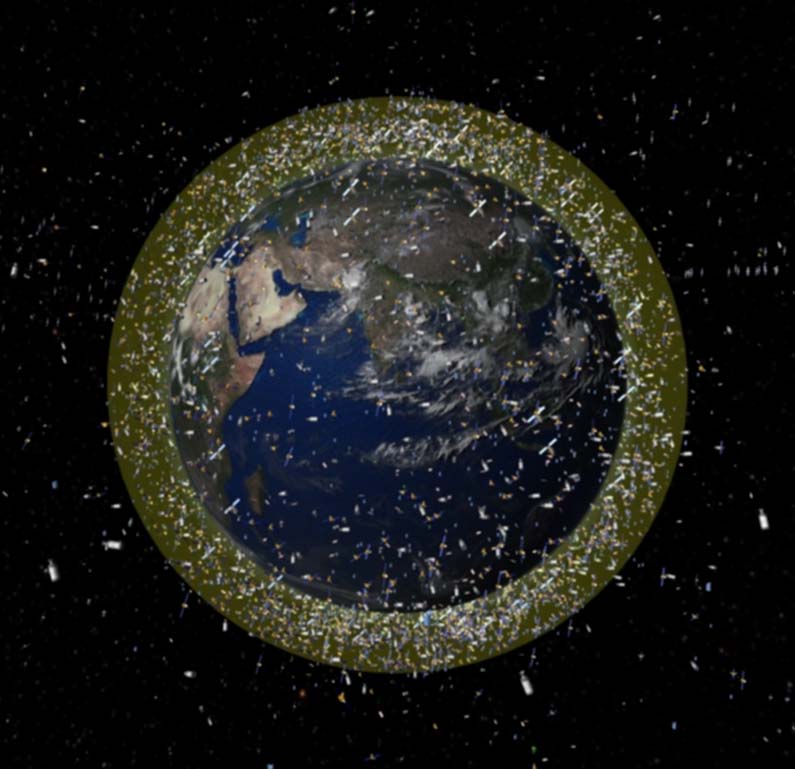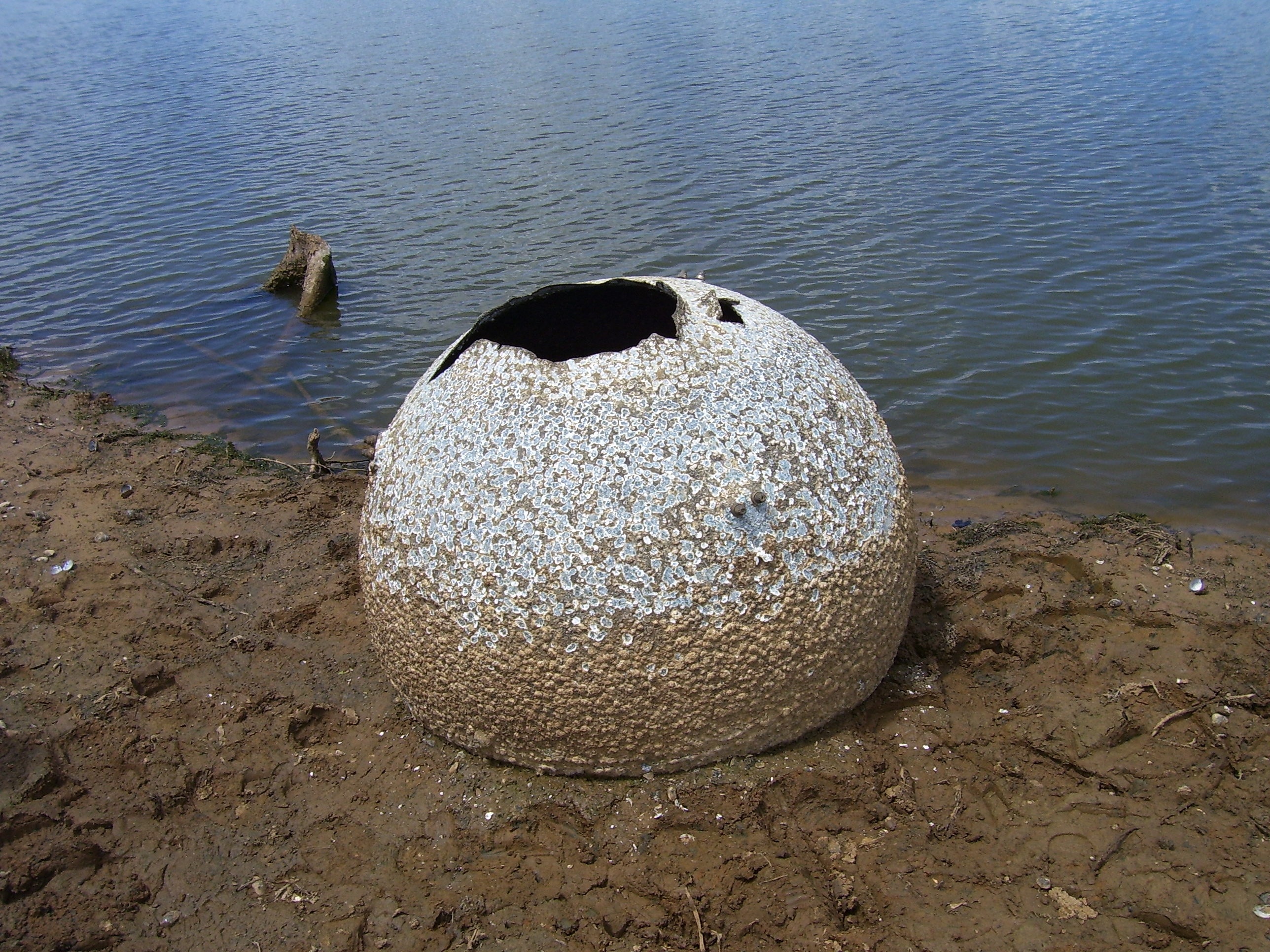Space Junk: Tracking & Removing Orbital Debris
Although outer space is often imagined to be a desolate, empty place, the region around Earth swarms with millions pieces of man-made debris that create potential hazards for their functioning neighbors. Where did all of this junk come from? Will it ever go away? What kind of problems might it create for people stationed on Earth? Let's take a look.
The source of space junk
With the launch of the Soviet satellite Sputnik in 1957, mankind began its journey to reach the stars. But although the first probe in space returned to Earth after only three short months, it kicked off a series of launches that not only inspired people around the world but also filled the region with large chunks of inert metal.
Inactive satellites, the upper stages of launch vehicles, discarded bits left over from separation, and even frozen clouds of water and tiny flecks of paint all remain in orbit high above Earth's atmosphere. When one piece collides with another, even more debris is released. Over 21,000 pieces of space trash larger than 4 inches (10 centimeters) and half a million bits of junk between 1 cm and 10 cm are estimated to circle the planet. And the number is only predicted to go up.
There are also millions of pieces of debris smaller than a third of an inch (1 cm). In Low Earth-orbit, objects travel at 4 miles (7 kilometers) per second. At that speed, a tiny fleck of paint packs the same punch of a 550 pound object traveling at 60 miles per hour. Not only can such an impact damage critical components such as pressurized items, solar cells, or tethers, they can also create new pieces of potentially threatening debris.
For fifty years, the primary source of all of the junk came from objects that exploded by accident. However, in 2007, the intentional destruction of the Chinese weather satellite Fengyun-1C as part of an anti-satellite missile test created a significant field of space debris. Two years later, a defunct Russian military satellite struck an operational American Iridium satellite over northern Siberia, blowing even more trash into space. [Worst Space Debris Events of All Time]
An ounce of prevention
Breaking space news, the latest updates on rocket launches, skywatching events and more!
Despite the small size of most of the objects in space, the U.S. and Russian military are able to keep track of a great deal of the mess. Objects as small as 4 inches (about 10 cm) can be seen by radars or optical telescopes on Earth. When preparing a launch, mission controllers screen the predicted post-launch orbit for potential collisions to avoid as much damage as possible. Similarly, crafts such as the space shuttle and the International Space Station can change their orbits if a larger object approaches.
But everything sent into space still faces potential collisions with smaller, untrackable objects that can pit or damage them. Satellites and space craft are heavily shielded to protect vital components. At NASA's Hypervelocity Impact Technology Facility in Texas, new protective materials can be tested by shooting objects from a Light-Gas gun to simulate space junk collisions.
Watch for falling objects
Earth's orbit is segregated into three distinct regions. Low Earth-orbit (LEO), covers the area 125-1,250 miles (200-2000 km). Pieces of space junk in this region are impacted by the atmosphere, which degrades their orbit, dragging them back to Earth sooner. This is a prime realm for piloted spacecraft due to its easy access. Navigation and communication satellites tend to prefer a semi-synchronous orbit 6,000 to 12,000 miles (10,000 to 20,000 km) above the surface. Satellite telecommunication and weather satellites orbit in geosynchronous Earth orbit, over 22,000 miles (36,000 km) high, and can remain aloft for millions of years. The lower the orbit, the less time the object is likely to remain in space before returning to Earth.
Bits and pieces of trash constantly fall from the sky, but nearly everything larger than 4 inches (10 cm) survives in some form, likely in smaller fragments. In the last five decades, an average of one piece of debris fell to the Earth each day. Most of the trash raining down burns up in the atmosphere before it ever reaches the surface. Those that survive often fall into water; remember, the ocean makes up approximately 70 percent of the Earth's surface. According to NASA's Orbital Debris Program Office, no serious injury or significant property damage from falling debris has been confirmed.
Video: An SM-3 missile launched from the USS Lake Erie hits a wayward satellite Wednesday, Feb. 20, 2008.
Adopt an atmosphere
In recent years, various space organizations have worked to reduce the amount of trash added to Earth's orbit by implementing better designs. Russia, China, Japan, France, and the European Space Agency have also issued guidelines on how to cut back on the potential impactors in orbit.
Cleaning the debris that already exists is a completely different challenge. Specific trips to larger objects could remove them from orbit, but at a high financial cost. Other proposals include the use of a laser to provide a path-shifting push that wouldn't damage the object. [Photos: Space Debris Images & Cleanup Concepts]
More debris facts:
- NASA's Long Duration Exposure Facility spent 5.7 years in a low Earth orbit to help analyze the risk from debris. Over 20,000 impacts have been documented.
- Critical surfaces on the Space Shuttle were examined for debris after every flight.
- Even a salt-sized grain hitting the space shuttle creates orbital debris.
- The most heavily shielded spacecraft ever flown, International Space Station changes its flight path if it is expected to come within a few miles of a large piece of debris. Such course corrections happen about once a year.
- The US Vanguard 1 satellite, launched in 1958, is the oldest artificial satellite still circling the Earth, despite its low orbit.
- More than 100 trillion artificial objects smaller than one-hundred-thousandth of an inch (1 micron) could circle the globe.
- NASA was the first space agency to issue guidelines for orbital debris mitigation in 1995.
— Nola Taylor Redd

Nola Taylor Tillman is a contributing writer for Space.com. She loves all things space and astronomy-related, and always wants to learn more. She has a Bachelor's degree in English and Astrophysics from Agnes Scott College and served as an intern at Sky & Telescope magazine. She loves to speak to groups on astronomy-related subjects. She lives with her husband in Atlanta, Georgia. Follow her on Bluesky at @astrowriter.social.bluesky


